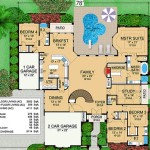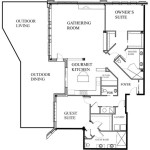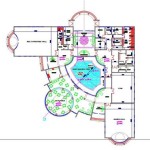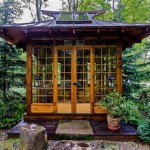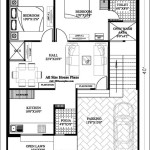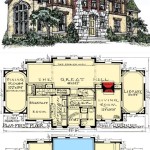Antique Farm House Plans: A Guide to Timeless Design
Antique farmhouses evoke a sense of nostalgia and charm, representing a simpler time and a connection to the land. Their enduring appeal continues to inspire contemporary home designs, with many seeking to capture the essence of these historic structures. Exploring antique farmhouse plans provides valuable insight into the architectural principles and practical considerations that shaped these homes.
These plans offer a glimpse into the past, showcasing the ingenuity and resourcefulness of early builders. Often designed with functionality at the forefront, antique farmhouses prioritized practicality and durability. Understanding the characteristics of these plans allows for a deeper appreciation of their historical context and provides a foundation for adapting these elements to modern living.
Emphasis on Practicality and Functionality
Antique farmhouses were built for a working lifestyle, with designs reflecting the daily demands of agricultural life. Kitchens were often large and centrally located, serving as the heart of the home and a space for food preparation, cooking, and gathering. Mudrooms and pantries provided essential storage for tools, supplies, and preserved foods. Floor plans were typically straightforward and efficient, minimizing wasted space and maximizing utility.
The placement of rooms was often dictated by the sun's path, maximizing natural light and passive heating. Bedrooms were frequently situated on the second floor, utilizing the rising heat for warmth during colder months. Windows and doors were strategically positioned to capture breezes and facilitate cross-ventilation, contributing to natural cooling in the summer.
Connection to the Surrounding Landscape
Antique farmhouses were deeply connected to the surrounding landscape. Porches and verandas offered shaded outdoor spaces for relaxation and socializing, while also serving as transitional areas between the interior and exterior. These spaces provided protected areas for work and leisure, blurring the lines between indoor and outdoor living.
The siting of the farmhouse itself was carefully considered, often taking advantage of natural features such as slopes and prevailing winds. Homes were frequently positioned to maximize views of fields and pastures, reinforcing the connection between the dwelling and the agricultural landscape. Outbuildings, such as barns and sheds, were integrated into the overall design, creating a cohesive farmstead.
Simple, Durable Construction Methods
Antique farmhouse construction prioritized simplicity and durability. Common materials included locally sourced timber, stone, and brick. These materials were readily available and offered excellent structural integrity. Construction techniques often employed traditional methods, passed down through generations of builders.
Emphasis was placed on creating robust structures capable of withstanding harsh weather conditions and the test of time. Simple rooflines, often gabled or hipped, provided efficient drainage and minimized snow accumulation. Foundations were typically constructed of stone or brick, offering a solid base for the structure.
Adapting Antique Farmhouse Plans for Modern Living
The timeless appeal of antique farmhouses has led to a resurgence of interest in adapting these plans for modern living. While preserving the historical character of the original design, modifications can be made to accommodate contemporary needs and preferences. Open-concept floor plans can be created by removing interior walls, while updating kitchens and bathrooms with modern appliances and fixtures enhances functionality.
Incorporating sustainable building practices and energy-efficient systems can further enhance the practicality of these designs. Utilizing modern insulation, windows, and heating and cooling systems can significantly improve energy performance while maintaining the historic aesthetic. The addition of modern amenities, such as home offices and media rooms, can seamlessly integrate contemporary lifestyles into the classic farmhouse framework.
Preserving Historical Integrity
When adapting antique farmhouse plans, it's crucial to maintain the historical integrity of the design. Careful consideration should be given to preserving original architectural details, such as window styles, door hardware, and decorative trim. Consulting with historical preservation experts can provide valuable guidance on appropriate modifications and materials.
Maintaining the original footprint and overall massing of the structure helps to retain its historical character. Using reclaimed materials from other antique structures can further enhance the authenticity of the renovation. By respecting the original design and incorporating modern updates thoughtfully, it’s possible to create a home that blends the charm of the past with the conveniences of contemporary living.
Finding and Utilizing Antique Farmhouse Plans
Antique farmhouse plans can be sourced from various resources, including historical societies, architectural archives, and online databases. When selecting a plan, it’s important to consider the size and layout of the lot, as well as local building codes and regulations. Working with a qualified architect or builder experienced in historical renovations can ensure that the project is executed successfully and respects the historical significance of the design.
Examining existing antique farmhouses in your area can provide inspiration and valuable insights into regional architectural styles and construction techniques. These structures serve as tangible examples of the principles and aesthetics embodied in antique farmhouse plans. By studying these historical precedents, one can gain a deeper understanding of the design elements that contribute to the enduring appeal of these timeless homes.

1900s Farmhouse Plans

Vintage House Plans Farmhouse 5

New House Floor Plans Old Charm

New House Floor Plans Old Charm

The Radford American Houses 100 Ilrated Old For

Farmhouse Plans With Porches Old Salt Farm

Vintage House Plans Old Houses For

Small Cottage House Plans 1881 Antique Victorian Architecture

My New Obsession Vintage House Plans Aimee S Victorian Armoire

Designs Freefarmhouse

